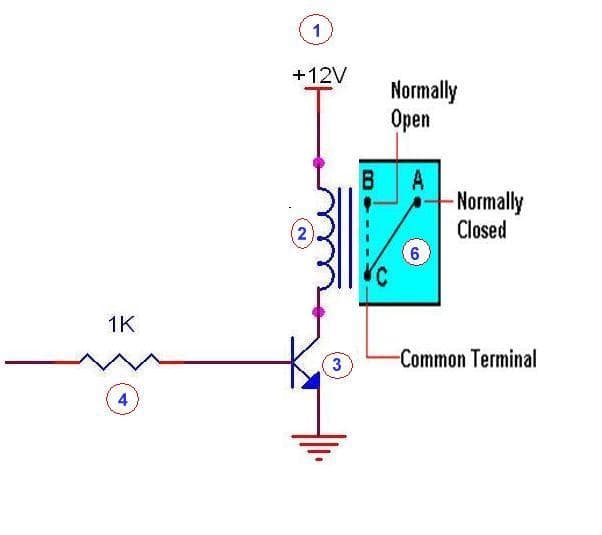PrinceTan
Hi fellow CEians,
I have a project currently requiring to compare a voltage to 24V reference and it must trigger a relay output when the input voltage is lower than 24V reference. Both voltages are DC supply. I planned to use LM393 and provide it with the same 24V reference as supply. Can it be done? Does the parameter of input common mode voltage range affect my application? I'm guessing it does, meaning I need to use a voltage divider to drop both input and reference voltage to below 24V? Any help is appreciated.
Regards,
Prince.
I cant help you much with comparator and transistor part,but as far as
relay is concerned , read below :

Please refer to circuit above.
a) The point B and point A of relay is connected to circuit which you want to control
by closing and opening relay.
b) Through point 1 ,we feed DC voltage which energies coil of relay labeled number 2.
Whenever a 12V DC is fed into this coil (2) ,the relay switch (6) is closed ,hence
closing circuit and completing the main circuit (which you connected to point B and point A) .
c) Now how to control closing and opening of relay switch (6) ???
For that a transistor is connected in series with relay coil (2). The transistor is labeled (3).
d) So ultimately , you can control relay by switching ON or OFF transistor (3).
e) You have to give a small signal to base of Transistor (3), to turn it ON or OFF .
In Our case we would give it through PLC.
f) You can use anything to supply a small signal enough to turn ON transistor.
This signal is fed at point (4).
f) As base of transistor gets signal,transistor current flows and the relay coil circuit (2) gets
completed.
This eventually closes relay switch (6).
If this concept fits with your project and you have doubts ,feel free to ask here.😀
Note :i) don't search for label 5 , i skipped it by mistake.😉
ii) The relay is electromagnetic type.
